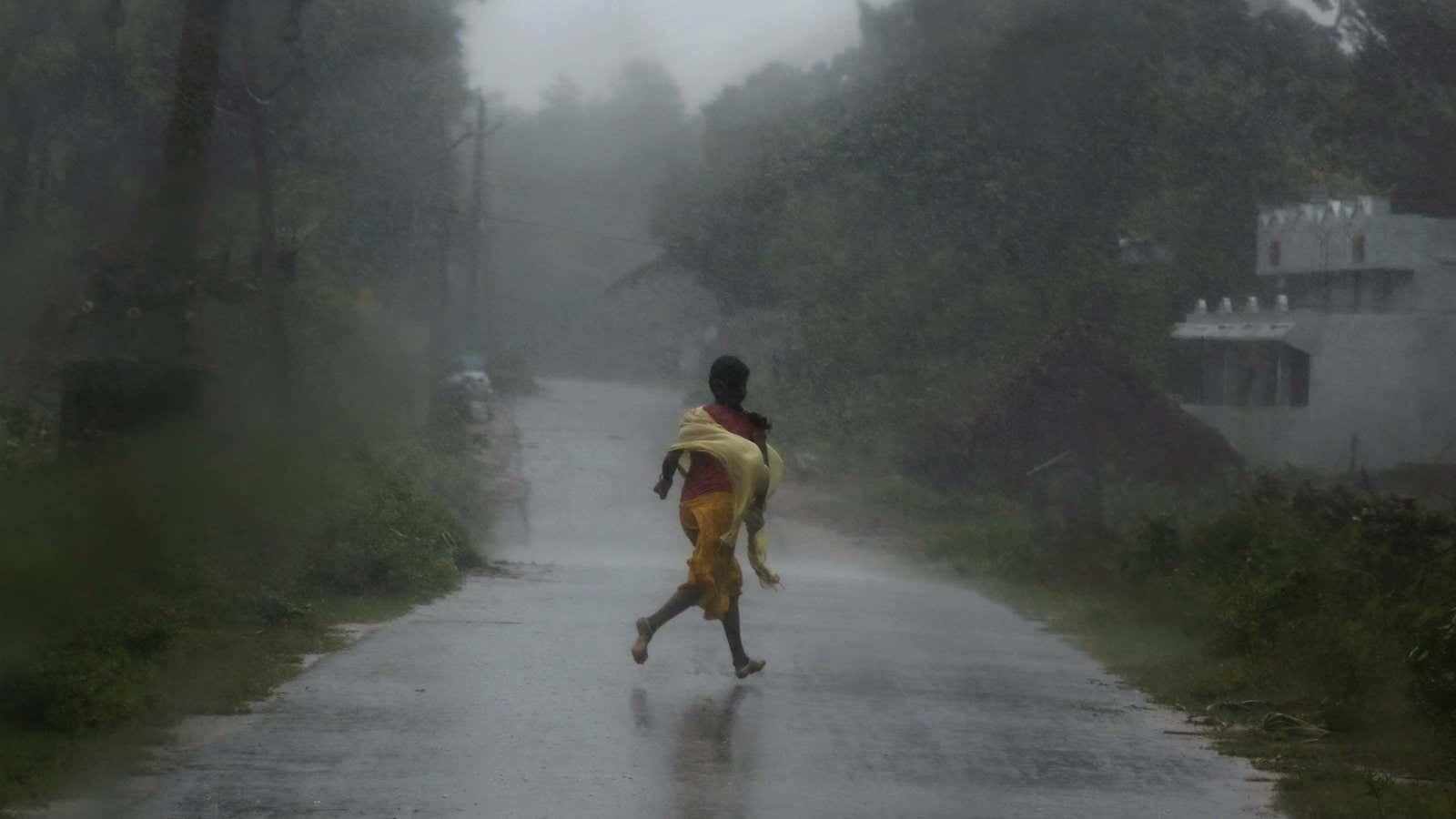The states of Tamil Nadu and Andhra Pradesh, as well as the union territory of Puducherry in India’s south, are bracing for the impact of Cyclone Gaja, expected to bring heavy rains and strong winds to several parts of the region this week.
The India Meteorological Department (IMD) has issued a red warning, the highest category which denotes “take action,” for the eastern coastal regions on Nov. 15, saying the cyclonic storm that originated in the Bay of Bengal will likely intensify into a severe one in the next 24 hours. Gale wind speeds could reach up to 100kmph along and off the coasts of north Tamil Nadu and Puducherry. With heavy to extremely heavy rain predicted in Tamil Nadu, southern coastal Andhra Pradesh, and Kerala, fishermen have also been warned not to go out to sea.
The cyclone could cause floods and mudslides, besides damage from the winds, according to Eric Leister, senior meteorologist at the American weather forecasting service AccuWeather.
Many of the places in the path of Cyclone Gaja have previously been hit by deadly cyclones. Last November, at least 365 people were killed in the wake of Cyclone Ockhi, which emerged in the Bay of Bengal and hit Kerala and Tamil Nadu before travelling all the way up to the eastern state of Gujarat. Reportedly the deadliest cyclone seen in India since 1999, it ravaged houses and crops (pdf), besides destroying infrastructure.
The IMD was criticised for not providing enough advance warning, which led to many fishermen heading out on the day of the storm. Hundreds were still missing a month later.
Andhra Pradesh is particularly vulnerable to cyclones, having experienced over 60 since 1975. Just last month, another severe storm, Cyclone Titli, led to the deaths of eight people in the state and the heavy rains damaged roads and the power infrastructure.
This time round, state governments have mobilised rescue teams in advance and set up shelters in case evacuations are required. In Tamil Nadu alone, a force of over 30,000 rescue personnel is reportedly on alert.
India’s National Disaster Management Authority (NDMA) has also issued guidelines for the safety of locals:
